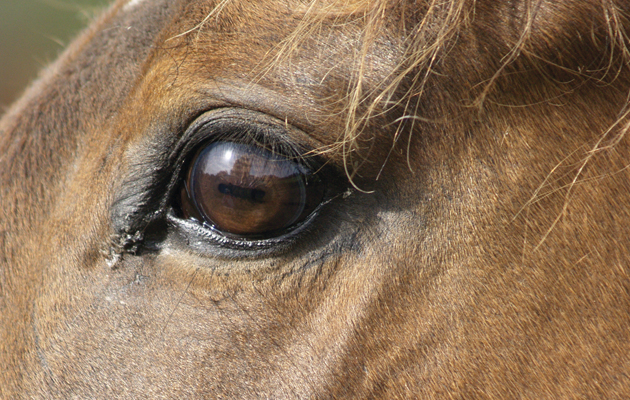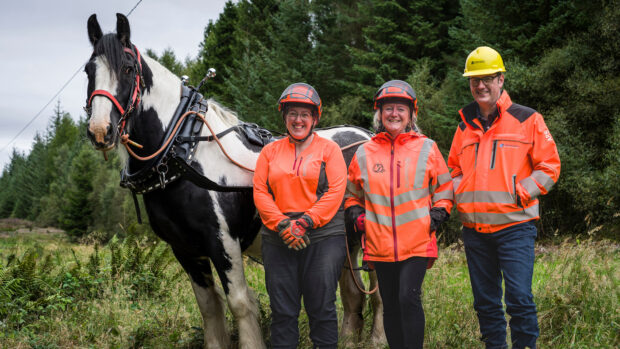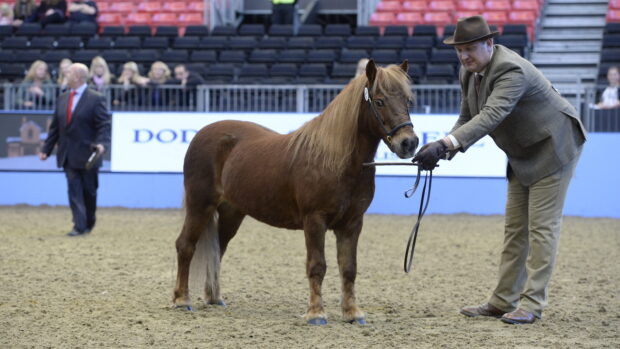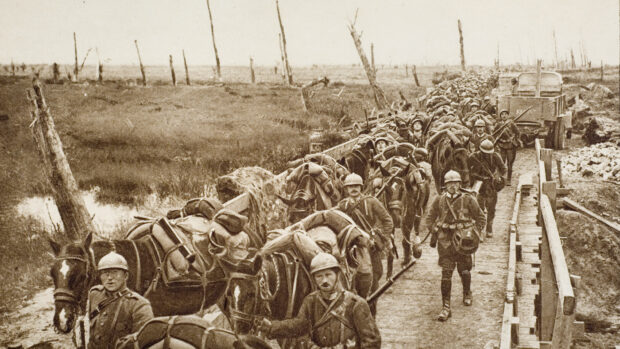Horses consider humans a “safe haven” but may not form specific attachment bonds with their owners, a new study suggests.
Previous research has shown dogs display the same four key attachment behaviours with their owners as children do with their parents but there has been limited research on whether horses form similar bonds.
The recent study, published in the December 2020 edition of Animal Applied Behaviour Science, explored whether horses displayed the same attachment-related behaviours towards a stranger as they did towards their owner.
In order to trigger attachment behaviours, the experiment stressed the horses by introducing them to a cordoned-off area of an arena where they were walked and then stood still before being left alone. They were later reunited with their handlers.
The experiment, conducted on 26 horses, was carried out first with the owner and then with a stranger.
As well as noting the horses’ behaviour, they used a heart monitor to record their levels of physiological stress.
The results showed that horses spent most of their time near the door to the arena during separation and sought human proximity when reunited, irrespective of whether the owner or the stranger was the handler.
The animals’ heart rates also significantly increased on separation and decreased when reunited, suggesting that they were stressed when left alone and reassured by a human presence.
“Dogs become stressed during separation from their owner, and they seek proximity and comfort upon reunion, indicating a safe haven effect. In addition, dogs repeatedly reveal behaviours such as increased play and exploratory behaviour together with their owner, indicating the secure base effect. To our knowledge, this has not been documented in horses,” the study’s authors Paulina Lundberg, Elke Hartmann and Lina Roth said.
“Thus, the horses showed at least two features of attachment, namely separation-related distress and safe haven as reflected in their heart rates.”
Where the horses behaviour deviated from attachment theory was that the horses perceived both the owners and strangers as safe havens. Another recent study, conducted by Ijichi et al (2018) found a similar lack of difference in behaviour when horses were led by their owners and strangers to navigate spooky equipment (eg across tarpaulins and through frames of plastic streamers).
The study also assessed whether the method the owners used to train their horses had any impact on attachment.
Owners were asked to fill in a questionnaire that identified whether they used positive reinforcement (PosRe), negative reinforcement or a combination of the two (combined reinforcement) during training.
During the reunion phase of the experiment, horses spent more time in stranger-proximity than in owner-proximity and the positive-reinforcement horses were found to be the source of this difference.
Contunes below…

Research into public feeding horses aims to prevent equine suffering
The author of the research wants to hear from as many horse owners as possible

Horses can tell when human voices and facial expressions don’t match
Research found the horses reacted differently when pictures of human emotions did not match those in recorded voices

Subscribe to Horse & Hound magazine today – and enjoy unlimited website access all year round
“Our results are contrary to studies in dogs where dogs trained with PosRe seek more contact with the owner than the stranger during reunion,” the authors said.
Assessment of the fourth marker of attachment behaviour, the secure base effect, was supported by the horses’ showing more exploratory behaviour with the owners than the strangers but the report noted that the design of the study may have been flawed, with the owners always handling the horses first. The novelty of the environment may therefore have been reduced by the time the strangers took over and the arena set up may also have been too barren to maintain the horses’ interest.
“The results related to proximity seeking and the secure-base effect were unclear and might, if existing, differ between dyads of different training styles,” the authors said. “A larger sample size and a counterbalanced design would be preferred in future studies for improved evaluation of exploratory behaviours.”
The authors also suggested that more refined behavioural indicators could be used.
“We did find that ear flicking increased more when horses were reunited with the owner and since ears and facial expression are shown to be of great importance in horse-horse communication and expressing emotional states a more detailed analysis of the alterations in the horses’ facial expressions could be interesting to include in future studies,” they added.
Horse & Hound magazine, out every Thursday, is packed with all the latest news and reports, as well as interviews, specials, nostalgia, vet and training advice. Find how you can enjoy the magazine delivered to your door every week, plus options to upgrade to access our H&H Plus online service which brings you breaking news as it happens as well as other benefits.





